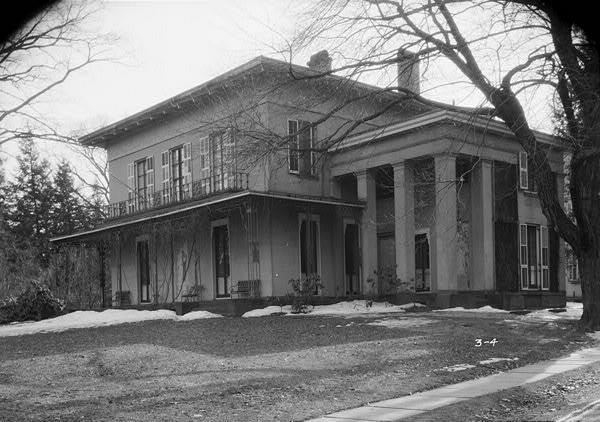Built 1840 Opened 1840 Phone +1 860-685-2500 | NRHP Reference # 70000686 Area 8,000 m² | |
 | ||
Added to NRHP 000000001970-10-06-0000October 6, 1970 Designated NHL 000000002009-01-16-0000January 16, 2009 Address 301 High St, Middletown, CT 06459, USA Similar Samuel Wadsworth Russell H, Wadsworth Falls State Park, Coginchaug River, Millers Pond State Park, Church of the Holy Trinity an | ||
The Richard Alsop IV House, also known as the Alsop House, is a historic house at 301 High Street in Middletown, Connecticut. It was designated a U.S. National Historic Landmark on January 16, 2009.
Contents
Relationship to its surroundings
This stately mansion faces east towards the Connecticut River from the west side of High Street opposite the intersection of Court Street. It is set back from the street atop a rise. A high iron fence borders the property along High Street. This house makes an important contribution to the elegance and high style which characterized High Street as the preferred residential area in nineteenth-century Middletown.
Significance
The Alsop house was built in 1838–1839 by Richard Alsop IV for his twice-widowed mother, Mrs. Maria (Alsop) Dana. The short-lived architectural firm formed by Landra Beach Platt and Francis Benne who worked together in New Haven under the tutelage of Sidney Mason Stone was evidently responsible for the design, although it is possible that they drew their inspiration from Ithiel Town's own home in New Haven, which may account for the similarities of the two structures as well as for a former attribution of the Alsop House to Town himself. (Stone's possible contributions have yet to be explored.) The well-known Middletown builders, Barzillai Sage and Isaac W. Baldwin, performed the masonry and carpentry work, respectively. The house remained in the hands of Alsop family until its acquisition in 1948 by Wesleyan University.
This house is significant architecturally for its transitional Greek-Tuscan Italianate appearance. The cubical, two-story, central block with overhanging eaves is flanked by colonnaded 1 1⁄2-story wings. A swag-and-tassel design decorates the frieze of the central block, which also displays a veranda supported by delicate ironwork and surmounted by an intricate balustrade.
A rear colonnaded wing which originally housed servant's quarters and service facility has been enclosed. At the west end of this wing are attached an art gallery of recent construction and the art library, originally the stable.
The interior of the Alsop house is noted for its decorative wall paintings. The stair hall displays trompe l'oeil painting of figures in niches, while the parlors, dining room and morning-room feature oil-on-plaster paintings. The parlor paintings are classically derived and some subjects are Raphaelesque in origin. In the morning room the formal classicism of the parlors is replaced by scenes derived from the "rural" Italian tradition of wall decoration. Local birds and insects are featured in these scenes. The dining room displays a painted frieze.
The main rooms of the house are furnished with period antiques and provide a suitable atmosphere in which to display the wall painting.
In its carefully restored condition, the Alsop house remains a monument to the skill of its designers, while serving Wesleyan University and the community as an art center.
Current condition and use
Currently part of the Wesleyan University campus, housing the Davison Art Center, the Richard Alsop IV House has been thoughtfully restored and preserved.
